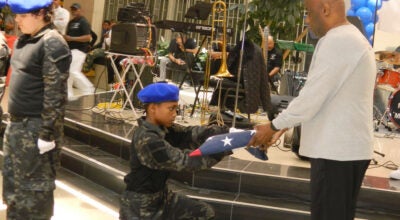The heat is on: Protect yourself
Published 12:00 am Wednesday, May 2, 2012
RALEIGH — The Labor Department urges those who work outside or in hot environments during the summer months to be cautious and know the signs of heat-related illnesses.
“North Carolina’s humid conditions coupled with the extreme heat make for a dangerous combination,” Labor Commissioner Cherie Berry said. “The department has launched a heat awareness campaign to bring attention to this workplace hazard that last year claimed four lives. Workers who understand the signs and symptoms of heat stress could help prevent serious injury to themselves or to a co-worker.”
The department’s Occupational Safety and Health Division has developed additional materials to help employers and employees recognize and prevent heat-induced illnesses before the condition escalates to the more severe heat stroke.
The OSH Division will work to reach farmers, factory workers, construction workers and highway crews that are at an increased risk of exposure to heat illnesses.
Before 2011, North Carolina had not experienced a heat-related fatality since 2006.
“We are especially concerned about this year considering the unseasonably warm weather we have had thus far,” Berry said. “Summer does not officially start until June 20, but we will face 90 degree weather this week. Please take proper precautions and protect yourself.”
Dehydration is one of the primary causes of heat illness. When the body is unable to cool itself by sweating, several heat-induced illnesses such as heat cramps, heat exhaustion and the more severe heat stroke can occur.
It is recommended that workers consume 8 ounces of water every 15 to 20 minutes. Beverages containing caffeine or alcohol are not recommended for hydration purposes.
Heat cramps are usually the result of hard physical labor in a hot environment, often resulting from an imbalance of electrolytes in the body. Heat exhaustion is a result of the combination of excessive heat and dehydration. Untreated, heat exhaustion can lead to heat stroke.
Heat stroke is the most serious disorder associated with heat stress and can be deadly if not treated properly.
Symptoms of heat exhaustion
• Headaches, dizziness, light headedness or fainting.
• Weakness and moist skin.
• Mood changes, irritability, confusion.
• Upset stomach, vomiting.
Symptoms of Heat Stroke
• Dry, hot skin with no sweating.
• Mental confusion or losing consciousness.
• Seizures or convulsions.
What to Do for Heat-Related Illness
• Call 911 (or local emergency number) immediately.
While Waiting for Help to Arrive
• Move person to a cool, shaded area.
• Loosen or remove heavy clothing.
• Provide cool drinking water (only if victim is conscious).
• Fan and mist the person with cool water; cool the victim’s head with a wet compress.
Desirable Work Practices for Those Working Outdoors
• Availability of cool drinking water.
• Heaviest and most exhausting work scheduled for the coolest part of the day.
• Frequent short breaks.
• Pacing tasks.
Prevention Is Our Intention
Know the signs and symptoms of heat-related illnesses; monitor yourself and co-workers.
• Avoid alcohol, caffeinated drinks and heavy meals.
• Wear lightweight, light-colored and loose-fitting clothing.
• Drink lots of water, about 1 cup every 15 minutes, even if you’re not thirsty.
• Rest regularly in cool, shaded or air conditioned areas.
The Labor Department has many publications available on heat stress available through the “Heat Stress Info” Quick Click on its website: www.nclabor.com.




